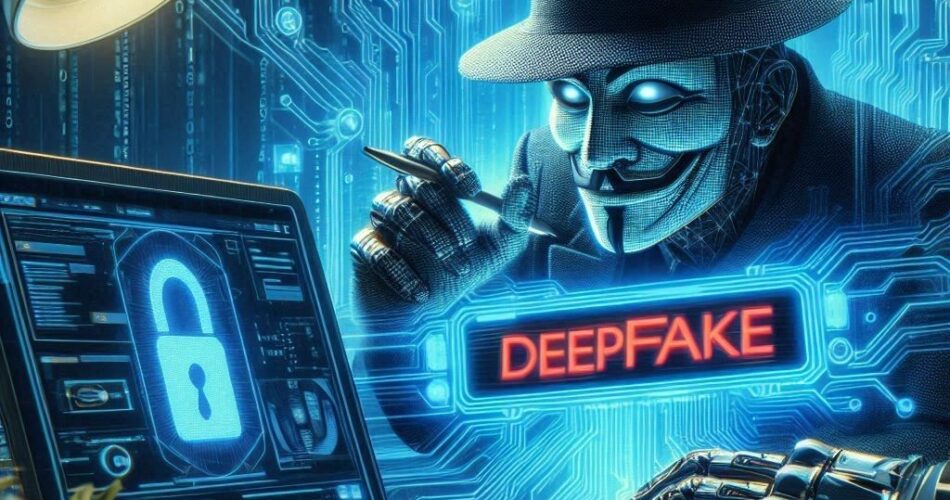Introduction
The evolution of deepfake technology has been both impressive and alarming. Originally designed for entertainment and creative purposes, deepfakes have now emerged as a significant cybersecurity threat. Cybercriminals are increasingly using deepfakes to manipulate audio, video, and images to impersonate individuals, creating a dangerous new class of cyberattacks.
In this blog, we’ll explore how deepfake cyberattacks work, the potential risks they pose, and how you can protect yourself and your organization from this evolving threat.
What Are Deepfake Cyberattacks?
Deepfakes are synthetic media generated by AI algorithms, particularly Generative Adversarial Networks (GANs), which can create highly realistic audio and video content that mimics real people. Cybercriminals have begun leveraging this technology to deceive organizations, conduct fraud, and manipulate public perception.
How Deepfake Cyberattacks Work
- Voice Impersonation
- Attackers use AI to create deepfake audio that mimics the voice of an executive or high-level employee. This audio is then used to trick others within the organization into transferring funds or revealing sensitive information.
- Video Manipulation
- Attackers generate fake videos of public figures, CEOs, or politicians making false statements, damaging reputations or spreading misinformation.
- Social Engineering
- Cybercriminals combine deepfake audio or video with phishing or social engineering tactics, making their attacks more believable and harder to detect.
Real-World Example
In 2019, a UK-based energy company fell victim to a deepfake voice attack where criminals used AI to impersonate the voice of the company’s CEO. The scammers successfully convinced an executive to transfer €220,000 to a fraudulent account.
Why Deepfake Cyberattacks Are Dangerous
1. Increased Credibility
Deepfakes are incredibly convincing, making it difficult for victims to distinguish between real and fake content. This increases the success rate of fraud and other cyberattacks.
2. Targeting High-Level Individuals
Deepfake attacks often target executives, politicians, and public figures to maximize the impact. These individuals are responsible for critical decisions, making impersonation a significant risk for businesses and governments.
3. Damage to Reputations
Deepfakes can be used to create damaging content that falsely portrays individuals in compromising situations, leading to loss of reputation, public trust, and even legal action.
4. Fueling Disinformation
Attackers use deepfakes to spread misinformation during critical events, such as elections or international conflicts. This can destabilize communities and create chaos in societies.
How to Protect Against Deepfake Cyberattacks
1. Raise Awareness
- Educate your employees, especially executives, about the risks posed by deepfakes. Awareness is the first line of defense against this sophisticated form of attack.
2. Verify Identities
- Implement strict identity verification protocols, especially when handling sensitive requests. If you receive a suspicious voice or video call, confirm the identity of the caller using alternative methods, such as direct phone calls or video conferencing.
3. AI Detection Tools
- Use AI-powered detection tools that can identify subtle inconsistencies in deepfake media, such as unnatural facial movements or audio glitches. These tools are becoming more advanced and can help detect manipulated content.
4. Multi-Factor Authentication (MFA)
- Require multi-factor authentication for financial transactions and access to sensitive data. This adds an extra layer of security, even if an attacker manages to impersonate someone’s voice or likeness.
5. Legal Measures
- Governments and organizations should advocate for stronger legal frameworks to regulate the use and creation of deepfake content, holding perpetrators accountable for malicious use.
The Future of Deepfake Cyberattacks
As deepfake technology becomes more sophisticated and accessible, the threat of deepfake cyberattacks will only grow. While detection tools are improving, the speed at which attackers can innovate is alarming. This arms race between deepfake creators and defenders will define the future of digital security.
Businesses, governments, and individuals must stay vigilant, adopt proactive defenses, and promote policies that address the ethical and legal challenges posed by deepfake technology.
Conclusion
Deepfake cyberattacks represent a new frontier in cybercrime, blending advanced AI with social engineering tactics to deceive and manipulate. As these attacks become more frequent and convincing, it’s essential to stay informed and take preventive measures to protect against this growing threat.
For more insights into emerging cybersecurity threats, stay tuned to our blog at bugbountytip.tech.
